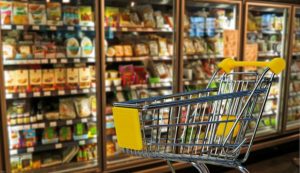 We present the TOP of the most notable events in the packaging industry market in April 2018.
We present the TOP of the most notable events in the packaging industry market in April 2018.
Aluminum Covers for Wine Packaging Segment
Aluminum covers prove their relevance and strengthen their position in the wine packaging segment, occupying a share of 30%.
The latest Euromonitor study says that of the 30 billion bottles sold globally per year, 9 billion units have aluminum covers. According to research, this shift towards increasing the popularity of aluminum screw caps is particularly evident in the largest wine markets in Europe and the US.
Guido Aufdemkamp, representative of the Aluminum Closures Group at the European Association of Aluminum Foil, EAFA, said: “Aluminum covers continue to show advantages over other types of wine closure. They are light, have a presentable appearance and, most importantly, allow you to quickly and conveniently open the bottle. ”
He noted that bottled wines with aluminum caps are especially in demand among young consumers. Also, producers of new brands of wine willingly experiment with this type of caps. It is also important that the aluminum packaging is suitable for recycling.
New Intelligent Packaging for Medicines
German company August Faller Group has developed a prototype of pharmaceutical packaging, which facilitates the reception of medicines for patients. This solution simultaneously meets the trends in the introduction of digital technologies and is a model of a modern interactive packaging solution. The company developed three prototypes: a counting device, a level indicator, and a medical prescription. The packaging is equipped with a flat electronic display with a microcontroller.
The prototype of the level indicator calculates the amount of liquid left in the bottle with the liquid medicine. A prototype counter allows patients to confirm the fact of taking the pill by pressing the button on the front of the folding box. The prototype of the medical prescription counts the pills and reminds the patient to take them for a while.
Patients also have the ability to receive a warning signal through the display if the batch of tablets is running out. However, this packaging solution allows you to use a proprietary application that allows you to send a recipe order via Bluetooth on the package.
LDPE Packages – Most Environmentally Friendly
The Danish Environmental Protection Agency published the results of a study analyzing the environmental impact of the production, use, and disposal of polyethylene bags.
The seven most common materials (low-density polyethylene (LDPE), polypropylene (PP), recycled polyethylene terephthalate (PEET), polyester, biopolymer, paper, cotton) and their variations used to make such packages have been analyzed in terms of environmental impact in accordance with international standards ISO 14040 and ISO 14044. Various options for the expiration of service life were taken into account, including incineration, recycling, and reuse as a garbage bag.
As it turned out in the course of the study for the packaging industry, the LDPE packages, compared to other materials from the list under consideration, have minimal impact on the environment. Hence, LDPE packaging is considered the most environmentally friendly. By the way, among the different types of bags, bags with a solid handle are preferable. The researchers also stated that re-use of the package as a garbage bag is preferable to just throwing it out or processing it.
Fully Processed Barrier Food Packaging Industry
The project supported and financed by the European Union aims to replace aluminum and other barrier materials in multi-layer films with recyclable biopolymer coatings. The RefuCoat project is coordinated by the Spanish plastics research center (AIMPLAS).
The head of the department of functional printing and coatings of the center of Susana Otero emphasizes: “Consumers want food with fewer preservatives and additives, as well as more natural freshness. At the same time, it is necessary to protect the product from humidity, oxygen, light. The popularity of high-barrier multi-layer packaging materials is increasing, but such packaging is not suitable for recycling.”
According to a report by Smithers Pira, “the global consumption of high-barrier packaging film in 2014 was about 1.76 million tons, which is 12 billion euros. It is expected that in the period from 2014 to 2018, it will grow by 5% “.
“The study of the plastic film showed that at least 1.3 billion pounds of film and bags were collected for processing during 2016,” which is 10% more than in the previous year.
Otero noted that within the framework of the RefuCoat project special efforts will be directed to the use of films with high barrier properties in relation to gas and other functional characteristics that are created through the use of special coatings. They are an alternative to metalized or vacuum packaging, which is difficult to process.
Thank you for reading our articles, stay informed about the industrial world and Exapro by following us on Exapro Hub, Facebook, Twitter, and LinkedIn.



